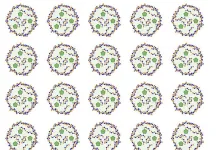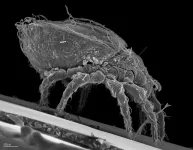(Press-News.org) NEW YORK, NY, January 24, 2025 — A team of scientists has developed a groundbreaking approach using specially designed peptides to improve drug formulations. This innovative method significantly enhances anti-tumor efficacy, as demonstrated in leukemia models. The study, published in the journal Chem, was led by researchers at the Advanced Science Research Center at the CUNY Graduate Center (CUNY ASRC) and Memorial Sloan Kettering Cancer Center.
Drug delivery systems often face two critical challenges: poor solubility and inefficient delivery within the body. Many drugs do not dissolve well, making it difficult for them to reach their intended targets. Furthermore, current delivery systems waste a significant portion of the drug during preparation—only 5–10% of the drug is successfully loaded, leading to less effective treatments.
Peptide Helpers
The research team has developed a novel solution by designing peptides—short strings of amino acids—to bind with specific drugs and create therapeutic nanoparticles. These nanoparticles are primarily composed of the drug, with a thin peptide coating that improves solubility, enhances stability in the body, and optimizes delivery to targeted areas. Remarkably, this approach achieves drug loadings of up to 98%, a dramatic improvement over traditional methods.
By using a combination of computer models and laboratory tests, new drug/peptide nanoparticles where identified. They subsequently demonstrated remarkable results in leukemia models. The nanoparticles were more effective at shrinking tumors compared to the drugs alone. Additionally, their high efficiency allows for lower doses of drugs, potentially reducing the side effects.
“Peptides, which are designed molecules made from the same building blocks as the proteins in our body, are extremely versatile,” said Co-Principal Investigator Rein Ulijn, director of the Nanoscience Initiative at CUNY ASRC and a chemistry professor at Hunter College. “We thought they could be useful in solving two big problems seen in many drugs: poor solubility and inefficient delivery. By designing a peptide that binds the drug while enhancing its solubility, we were able to create nanoparticles with very high loading.”
Customizable Technology
This innovation holds significant potential because peptides can be customized to enhance the effectiveness of various drugs. Given the vast range of possible interactions in peptide design, it may be feasible to tailor peptides for specific drugs, extending their applicability beyond cancer treatments.
“This breakthrough enables the development of better precision medicines,” said Co-Principal Investigator Daniel Heller, head of the Cancer Nanomedicine Laboratory at Memorial Sloan Kettering Cancer Center’s Molecular Pharmacology Program. “Using specially designed peptides, we can build nanomedicines that make existing drugs more effective and less toxic and even enable the development of drugs that might not be able to work without these nanoparticles."
Naxhije “Gia” Berisha, a former CUNY Graduate Center Ph.D. student who performed much of the experimental work, highlighted the potential of the peptide approach: “We used experimental testing to identify promising peptides and computational modeling to analyze their interactions with therapeutic molecules,” she said “It’s incredible to see how simple variations in peptide sequence could match specific drugs. This suggests there may be a peptide match for every drug, potentially revolutionizing the way medicines are delivered.”
Looking Ahead
The research team is now adopting lab automation methods to further refine and accelerate the peptide-drug matching process. Their next steps include verifying the approach’s potential in a wider range of diseases. If successful, this innovation could lead to more effective treatments, reduced side effects, and significant cost savings in drug development.
DOI is 10.1016/j.chempr.2024.102404
About the Advanced Science Research Center at the CUNY Graduate Center
The Advanced Science Research Center at the CUNY Graduate Center (CUNY ASRC) is a world-leading center of scientific excellence that elevates STEM inquiry and education at CUNY and beyond. The CUNY ASRC’s research initiatives span five distinctive, but broadly interconnected disciplines: nanoscience, photonics, neuroscience, structural biology, and environmental sciences. The center promotes a collaborative, interdisciplinary research culture where renowned and emerging scientists advance their discoveries using state-of-the-art equipment and cutting-edge core facilities.
About the Graduate Center of The City University of New York
The CUNY Graduate Center is a leader in public graduate education devoted to enhancing the public good through pioneering research, serious learning, and reasoned debate. The Graduate Center offers ambitious students nearly 50 doctoral and master’s programs of the highest caliber, taught by top faculty from throughout CUNY — the nation’s largest urban public university. Through its nearly 40 centers, institutes, initiatives, and the Advanced Science Research Center, the Graduate Center influences public policy and discourse and shapes innovation. The Graduate Center’s extensive public programs make it a home for culture and conversation
END
Scientists design peptides to enhance drug efficacy
The work could lead to more effective drug therapies for a variety of diseases, including cancer.
2025-01-24
ELSE PRESS RELEASES FROM THIS DATE:
Collaboration to develop sorghum hybrids to reduce synthetic fertilizer use and farmer costs
2025-01-24
ST. LOUIS, MO, January 24, 2025 - A new collaborative research team of leading plant scientists are developing sorghums with nitrogen-saving traits by utilizing the genetic diversity of wild relatives to improve resilience and productivity for grain sorghum producers.
The project is part of a $38 million investment in nine projects by the U.S. Department of Energy, DOE, Advanced Research Projects Agency-Energy, ARPA-E, to develop advanced technologies for plants to increase nitrogen-use efficiency and reduce nitrogen pollution from U.S. bioenergy feedstocks.
Veena Veena, PhD, MBA, principal investigator and director of the Plant Transformation ...
Light-activated ink developed to remotely control cardiac tissue to repair the heart
2025-01-24
Researchers from Mass General Brigham and collaborating institutions have developed a non-invasive approach to manipulate cardiac tissue activity by using light to stimulate an innovative ink incorporated into bioprinted tissue. Their goal is to develop a technique that can be used to repair the heart. Their findings in preclinical models, published in Science Advances, show the transformative potential of non-invasive therapeutic methods to control electrically active tissues.
“We showed for the first time that with this optoelectronically active ink, we can print scaffolds that allow remote control of engineered heart tissues,” said co-corresponding ...
EMBARGOED: Dana-Farber investigators pinpoint keys to cell therapy response for leukemia
2025-01-24
Boston – Dana-Farber Cancer Institute researchers have identified factors that determine whether donor lymphocyte infusion (DLI), a standard therapy for patients with acute myeloid leukemia (AML) who have relapsed after allogenic hematopoietic stem cell transplant, will successfully move the patient into remission. The team identified that a key cell type in the DLI product and features of the tumor microenvironment in patients both play a role.
The findings were published in Science Immunology.
“Relapse of AML after stem cell transplant is a major challenge,” says first author Katie ...
Surgeon preference factors into survival outcomes analyses for multi- and single-arterial bypass grafting
2025-01-24
LOS ANGELES—January 24, 2025—In patients undergoing coronary artery bypass grafting (CABG), a novel analysis evaluating surgeon preference for multi- versus single-arterial grafting may help explain the differing results between prior retrospective analyses and randomized controlled trials regarding long-term survival.
A study presented this week at The Society of Thoracic Surgeons’ 61st Annual Meeting explores findings in more than a million U.S. Medicare beneficiaries who underwent CABG from 2001 to 2019. The researchers found that patients who received multi-arterial grafting (MAG) had improved survival over those who ...
Study points to South America – not Mexico – as birthplace of Irish potato famine pathogen
2025-01-24
Call it a mystery solved.
North Carolina State University researchers firmly point the finger at the South American Andes Mountains as the place where the Irish potato famine pathogen, Phtytophthora infestans, originated.
In a wide-ranging study of the genetic material found in P. infestans and other members of the Phytophthora species, the NC State researchers provide more evidence that P. infestans spread from South America to North America before wreaking havoc in Ireland in the 1840s. The pathogen still causes late-blight disease on potato and tomato plants around the world.
Much ...
VR subway experiment highlights role of sound in disrupting balance for people with inner ear disorder
2025-01-24
The vestibular system is a network of organs in the inner ears that detects the motions and position of the head. The brain uses this information, along with inputs from the eyes and joints, to maintain the body’s balance.
Visual information has long been proven to affect balance—for example, strobe lights and swirling images can cause instability—but a new study published in PLOS ONE shows that sounds can also be a disruptive factor for those who have vestibular hypofunction, a vestibular system disorder resulting in impaired balance.
“People with vestibular hypofunction have ...
Evolution without sex: How mites have survived for millions of years
2025-01-24
In collaboration with colleagues from international partner institutions, researchers at the University of Cologne have investigated the asexual reproduction of oribatid mites using genome sequencing techniques. They show that the key to evolution without sex in oribatid mites may lie in the independent evolution of their two chromosome copies – a phenomenon known as the ‘Meselson effect’. The research team identified various mechanisms that may contribute to the genetic diversity of the chromosome ...
U. of I. team develops weight loss app that tracks fiber, protein content in meals
2025-01-24
URBANA, Ill. – Many people struggle to maintain a healthy weight, and choosing the optimal meals for weight loss can be challenging. A research team at the University of Illinois Urbana-Champaign has developed a weight management program that helps individuals plan meals with the assistance of a web application and support from a registered dietitian. In a new study, they discuss the app’s features, development, and implementation.
“The overall goal is to develop an online weight loss program that can be used as prevention as well as treatment in a clinical setting,” said co-author Manabu Nakamura, associate professor in the Department of Food Science ...
Progress and challenges in brain implants
2025-01-24
In a paper recently published in the leading journal "The Lancet Digital Health", a scientific team led by Stanisa Raspopovic from MedUni Vienna looks at the progress and challenges in the research and development of brain implants. New achievements in the field of this technology are seen as a source of hope for many patients with neurological disorders and have been making headlines recently. As neural implants have an effect not only on a physical but also on a psychological level, researchers ...
City-level sugar-sweetened beverage taxes and changes in adult BMI
2025-01-24
About The Study: Sugar-sweetened beverage (SSB) excise taxes were associated with reduced mean body mass index (BMI) among adults in demographic subgroups, including in young adults who consumed the most SSBs, and in Berkeley, in this cohort study. Future research should examine the mechanisms of these associations to inform how SSB taxes could be more equitable for weight-related outcomes.
Corresponding Author: To contact the corresponding author, Emily F. Liu, MPH, email emily.f.liu@kp.org.
To access the embargoed study: Visit our For The Media website at this link https://media.jamanetwork.com/
(doi:10.1001/jamanetworkopen.2024.56170)
Editor’s ...
LAST 30 PRESS RELEASES:
Exploring how the visual system recovers following injury
Support for parents with infants at pediatric check-ups leads to better reading and math skills in elementary school
Kids’ behavioral health is a growing share of family health costs
Day & night: Cancer disrupts the brain’s natural rhythm
COVID-19 vaccination significantly reduces risk to pregnant women and baby
The role of vaccination in maternal and perinatal outcomes associated with COVID-19 in pregnancy
Mayo Clinic smartwatch system helps parents shorten and defuse children's severe tantrums early
Behavioral health spending spikes to 40% of all children’s health expenditures, nearly doubling in a decade
Digital cognitive behavioral treatment for generalized anxiety disorder
Expenditures for pediatric behavioral health care over time and estimated family financial burden
Air conditioning in nursing homes and mortality during extreme heat
The Alps to lose a record number of glaciers in the next decade
What makes a good proton conductor?
New science reporting guide published for journalists in Bulgaria
New international study reveals major survival gaps among children with cancer
New science reporting guide published for journalists in Turkey
Scientists develop a smarter mRNA therapy that knows which cells to target
Neuroanatomy-informed brain–machine hybrid intelligence for robust acoustic target detection
Eight SwRI hydrogen projects funded by ENERGYWERX
The Lundquist Institute and its start-up company Vitalex Biosciences Announces Strategic Advancement of Second-Generation fungal Vaccine VXV-01 through Phase 1 Trials under $40 Million Competitive Con
Fine particles in pollution are associated with early signs of autoimmune disease
Review article | Towards a Global Ground-Based Earth Observatory (GGBEO): Leveraging existing systems and networks
Penn and UMich create world’s smallest programmable, autonomous robots
Cleveland researchers launch first major study to address ‘hidden performance killer’ in athletes
To connect across politics, try saying what you oppose
Modulating key interaction prevents virus from entering cells
Project explores barriers to NHS career progression facing international medical graduates
Jeonbuk National University researchers explore the impact of different seasonings on the flavor perception of Doenjang soup
Two Keck Medicine of USC Hospitals named Leapfrog Top Teaching Hospitals
World-first discovery uncovers how glioblastoma tumours dodge chemotherapy, potentially opening the door to new treatments
[Press-News.org] Scientists design peptides to enhance drug efficacyThe work could lead to more effective drug therapies for a variety of diseases, including cancer.





